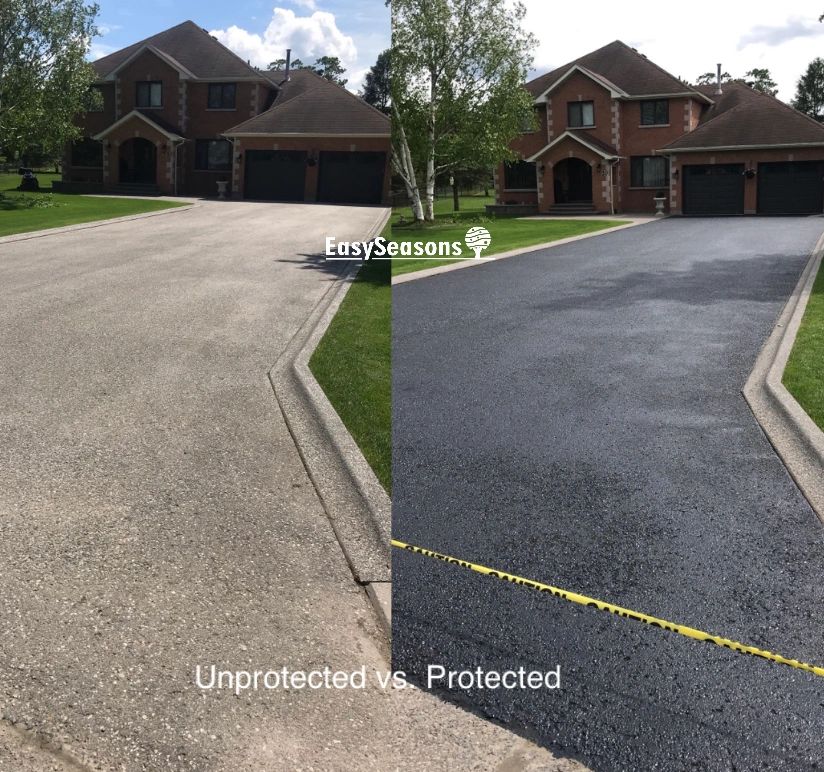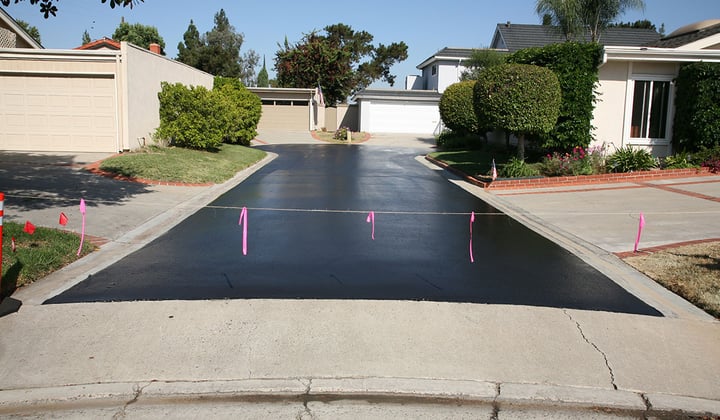Unlock the Keys of Asphalt Sealing: Taking Full Advantage Of Hot Mix Asphalt Long Life
Warm Mix Asphalt: A Lasting Remedy for Pavement
Hot Mix Asphalt (HMA) has emerged as a leading sustainable option for pavement solutions, supplying a myriad of ecological benefits and cutting-edge modern technologies. Its capacity to recycle materials and minimize power intake presents a compelling situation for its adoption in road construction projects. In addition, the long-lasting performance and longevity of HMA make it a recommended option for facilities growth. As the demand for environment-friendly construction techniques grows, discovering the nuances of HMA's sustainability can supply beneficial insights right into the future of sidewalk options.
Environmental Benefits of Hot Mix Asphalt

In Addition, Warm Mix Asphalt helps to mitigate city warmth island results. Its dark shade soaks up sunshine, decreasing the amount of warmth reflected back right into the atmosphere contrasted to lighter-colored sidewalks. This can lower ambient temperatures in city areas, decreasing the demand for cooling and inevitably lowering energy usage.
On top of that, Warm Mix Asphalt contributes to improved stormwater monitoring. Its porous nature permits water to reenergize and penetrate the pavement groundwater products, minimizing overflow and the threat of flooding. These ecological benefits make Warm Mix Asphalt a sustainable choice for leading freeways and roads.
Power Efficiency in HMA Manufacturing
Is energy performance an important variable in the manufacturing of Warm Mix Asphalt (HMA)? Energy plays a considerable duty in the production of HMA, affecting both expense and ecological sustainability. One key facet of energy efficiency in HMA production is the use of warm mix asphalt (WMA) modern technologies.
Furthermore, developments in plant modern technologies have actually led to even more energy-efficient HMA manufacturing processes. Modern plants are created with functions like recycled asphalt pavement (RAP) handling abilities, efficient heater systems, and enhanced insulation, all adding to energy cost savings. By maximizing energy use in HMA production, the market can decrease its carbon footprint while keeping premium sidewalk materials. Energy efficiency is, therefore, an important consideration in guaranteeing the sustainability of Warm Mix Asphalt manufacturing.
Recyclability of Hot Mix Asphalt
The recyclability of Warm Mix Asphalt (HMA) is a pivotal element of its sustainability and long-lasting ecological effect. HMA is among one of the most recycled products in the USA, with over 100 million heaps of recovered asphalt sidewalk (RAP) being reused annually in new sidewalk construction. Recycling HMA provides numerous environmental benefits, such as lowering the need for virgin materials, lowering energy intake during manufacturing, and lowering the amount of waste sent to landfills.
The process of recycling HMA includes Read More Here crushing the existing pavement, squashing it right into smaller sized items, and blending it with brand-new aggregate and asphalt binder to produce a recycled mix. On the whole, the recyclability of HMA plays a substantial duty in promoting lasting practices within the pavement industry.

Long-Term Efficiency of HMA
Asphalt sidewalks demonstrate resilience and strength over an extensive duration, showing the long-lasting efficiency of Warm Mix Asphalt (HMA) Furthermore, developments in HMA innovation, such as the use of polymer-modified binders and cozy mix asphalt, have additionally improved the durability and durability of HMA pavements. By focusing on high quality building and construction and maintenance practices, HMA best site continues to prove itself as a cost-effective and sustainable option for durable sidewalk facilities.

HMA: Sturdiness and Sustainability
Showing both durability and sustainability, Hot Mix Asphalt (HMA) has ended up being a keystone in the construction of durable pavement infrastructures - angled parking. HMA's toughness originates from its ability to stand up to heavy loads, harsh weather problems, and high traffic volumes, making it a trusted option for roadways, highways, and flight terminal runways. The structure of HMA, which commonly includes accumulations, binder, and filler, plays a vital role in enhancing its longevity and resistance to deterioration
Additionally, HMA's sustainability exists in its recyclability and energy-efficient production process. The ability to recycle reclaimed asphalt pavement (RAP) in new HMA blends lowers the demand for virgin materials and lessens the environmental impact of sidewalk construction and upkeep. In addition, the power efficiency of producing HMA lies in its reduced blending temperature levels contrasted to various other sidewalk materials, leading to minimized energy usage and greenhouse gas discharges.
Verdict
To conclude, hot mix asphalt (HMA) provides a lasting service for pavement with its eco friendly characteristics. useful link HMA's recyclability, energy performance in manufacturing, and long-lasting resilience make it an eco-friendly selection for roadway building. By preserving natural deposits, lowering waste, and lowering greenhouse gas discharges, HMA plays a crucial duty in advertising sustainability in framework development. Its ability to reduce city heat island results better highlights its importance in developing environmentally mindful and resilient pavement systems.
HMA is one of the most recycled materials in the United States, with over 100 million heaps of redeemed asphalt sidewalk (RAP) being reused each year in new sidewalk construction.The procedure of reusing HMA involves crushing the existing sidewalk, squashing it into smaller items, and mixing it with brand-new accumulation and asphalt binder to create a recycled mix.Asphalt pavements demonstrate toughness and resilience over an extended period, reflecting the lasting efficiency of Warm Mix Asphalt (HMA) Additionally, innovations in HMA modern technology, such as the usage of polymer-modified binders and warm mix asphalt, have further boosted the longevity and durability of HMA sidewalks. The capability to recycle redeemed asphalt sidewalk (RAP) in new HMA blends lowers the demand for virgin products and lessens the ecological effect of sidewalk construction and upkeep.